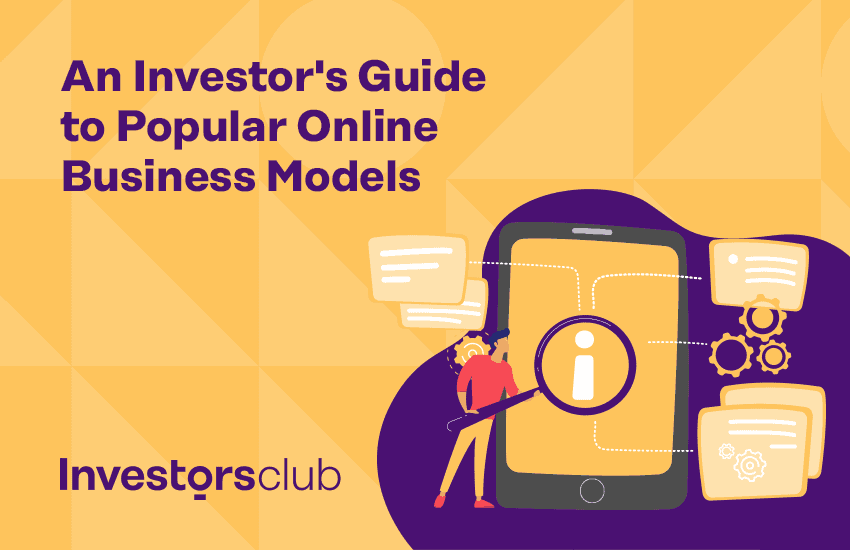Do you want more freedom and flexibility in your life and a way to diversify your income?
If so, launching your online business may be the best thing you ever do.
There are already more than 40 million digital nomads worldwide, traveling and working from anywhere. A large percentage of these new entrepreneurs will start an online business.
So, is there still room for you online?
The answer is a big “YES”.
With the increase in unique niche markets, new internet users every day, and consumers using online content for their information needs, there are plenty of reasons to invest in a new business.
Whether you are looking to buy an existing affiliate website or a passive income business or even develop your own e-commerce site, there’s a place for you in the market.
But which business model should you choose?

Are you confused by all the options?
We’re going to change that.
In this overview, we’ll discuss 11 of the most popular online business models today. You’ll discover what they are, how they work, and whether they’re the right choice for you.
Here’s what you’ll learn
- What is it?
- How does it work?
- Pros
- Cons
- Best for you if….
So, let’s dive in to see which online business is right for you.
DIGITAL PRODUCTS
Digital products now represent a huge slice of online commerce.

What are digital products?
They include anything from ebooks, software and online courses, to templates, video tutorials and photographs.
We can broadly divide these into the following categories:
- Text-based: Ebooks, Guides and Templates
- Video: Tutorials, Paid Webinars
- Audio: Spoken E-Books, Audio Courses
- Image-based: Done-for-you Graphics, Logos
- Tools and Software: WordPress Themes, Apps, and Plug-ins
Text-based digital products are most often seen because they’re the quickest and easiest to create.
This means they’re a popular choice for anyone starting out on a passive income journey.
How does it work?
You basically have three choices when selling digital products.
- You can create them yourself,
- Get someone else to create them,
- Resell someone else’s product.
Many business owners hire freelancers, or agencies to develop products for them.
Once you have your product, you’re going to need a way to distribute it to buyers.
Options for this include selling from your own website, an e-commerce store, a marketplace such as Skillshare, or Amazon for certain products.
Whatever your choice, you’ll need to look for a product that is in a growing niche and choose the best methods to find and market it to your buyers.
Pros
- Higher profit margin
- No need to ship anything
- No storage costs
- Product is always available
Cons
- Easy to copy and share
- No repeat sales
- Very competitive market – and there’s a lot of free content online
Best for you if
- You already have an idea for a digital product, or have created one before.
- You’re in a niche where there is low competition.
- You have a network of contacts who may be interested in your offers.
- If you prefer a low-risk business, then digital products might be a great choice because you have less to lose if sales don’t go well.
LEAD GENERATION
Because every business needs sales in order to grow, getting a steady flow of leads is vital.

What is lead generation?
Put simply, a lead generation business is one where you find qualified prospects for other businesses.
How does it work?
There are two main approaches to lead generation.
Having said that, most of the processes and tools needed to set up and run this business are the same.
Firstly, you need to identify a niche to specialize in.
A certain amount of research is needed to determine whether there is enough demand for the leads you generate.
A good technique is to target a particular city with a population between 150,000 – 300,000 people.
Local businesses are always looking for new customers so they’re a great place to begin.
For example, if you choose to go after “Real Estate Agents Arlington”, then your website content would be solely focused on real estate in that city.
It’s preferable to find a niche with a lot of small businesses who are already paying for Google ads and where the price per lead is reasonably high.
To provide leads and gain clients, you need a lead generating system to gather them.
This starts with building a website that’s focused on conversions (calls, email submissions, video views, etc.)
Your next move is to get that site ranking high on Google.
Proper local SEO is your best bet.
This means optimizing your website to rank for a number of different keywords in your niche.
According to statistics from HubSpot, SEO is the top resource for capturing business leads, followed closely by email marketing and social media.
It’s important that your content is of quality and real value.
It should be what a legitimate business would put on their website.
You’ll also need some tools such as a trackable phone number, email, and analytics to track your site visits and keywords.
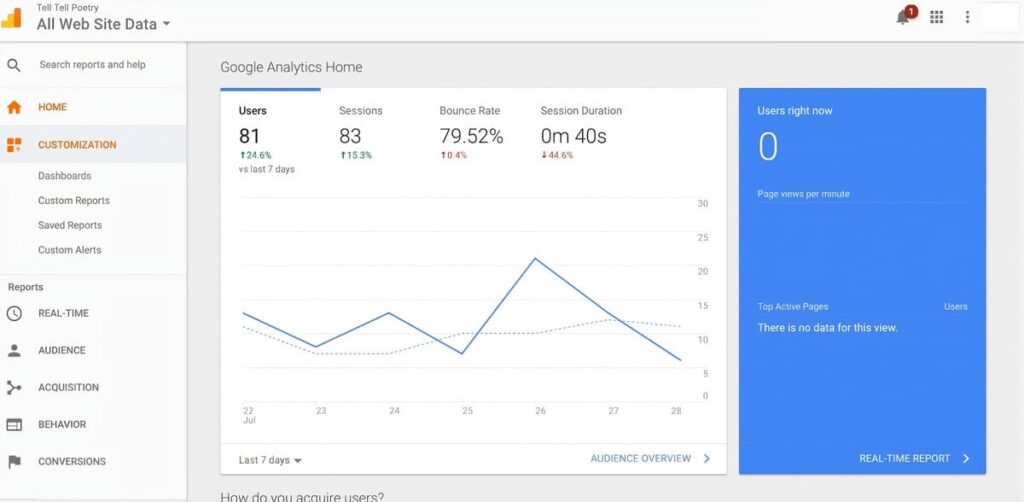
Once you have targeted traffic coming to your website, you are in a good position to contact those real estate companies and offer them the opportunity to rent your website (monthly retainer).
Reach out to them with a call, or email multiple businesses to find interested prospects.
You’ll need to include details from your tracking data to convince them your site is able to provide them with a return on investment.
When you’ve secured a few prospects you’ll be able to rent it out to the highest bidder.
Simply add their contact information to your site and every lead is directed straight to them.
The best thing is that you still own this site, but will collect a monthly retainer for as long as the client chooses to pay you.
A bit different approach
Here’s another angle.
This one also requires you to rank your website for specific keywords and locations.
The difference with this method is that you would collect the leads yourself instead of forwarding them directly to another business.
You are paid per lead – not on a retainer basis, or per closed sale – as it’s always up to the business owner to close the deal.
If you want to gather a bunch of leads fast, then set up some paid advertising using Adwords.
To avoid wasting money here, your website should look great and you need to have done extensive keyword research.
To ensure you consistently make money from your leads, it’s best to have multiple buyers lined up.
That way, if one stops buying, you have another client ready to pay for those leads.
Once again, you would sell them to the highest bidder.
Trending application: Investment property sector
Lead generation can be applied to various industries, but one of the most lucrative sectors is real estate investments. By generating contact details of potential real estate investors, you can create a valuable resource for real estate companies and brokers who are constantly in search of new clients.
One successful example of a lead generation website in the real estate investment sector is Wereldwijd Leven. This platform has carved out a niche in the Dutch and Belgian markets, providing valuable leads for companies selling investment properties. Through a combination of informative content, SEO, and strategic marketing, this niche website has managed to create a successful lead generation model that serves as a significant income source.
Pros
- No inventory to hold, store or ship
- You can start on a small scale
- High demand for qualified leads
Cons
- No control over the product or service you are promoting
- It can take time to drive traffic – depending on how you generate leads
Best for you if
- You are a serious blogger, coach or consultant with organic traffic.
- You are an entrepreneur with the skills and knowledge to develop multiple lead generation strategies.
- You have knowledge in paid traffic and running a Pay per Click (PPC) campaigns.
MEMBERSHIP SITES
Once they’ve joined, your members have access to exclusive content on your site.

What is a membership site?
A membership site is typically one where your customers pay a monthly subscription to get access to gated content.
Some membership sites use a mix of a monthly fee and upsells for other products and services.
There are numerous types of membership sites including those offering courses, digital products, or premium content such as industry reports.
A great example is our very own Investors Club Premium membership. By signing up, members get exclusive benefits like immediate access to new listings, revenue and traffic insights, graphs and reports, premium-only business listings, ad-free browsing experience, weekly deal flow notifications, and more.
How does it work?
The first step is to have a great site/brand recognition and a niche offer with content that people are willing to pay for.
This is because most people join membership sites to speed up their learning, simplify processes, or get greater detail on how to do something.
Membership sites can be totally automated through membership plug-ins and email marketing.
Of course, it’s best to have a combination of offers because members want value for their subscription.
It’s likely you’ll create new content in the form of webinars, lessons, pdf documents, or product offers on a regular basis.
People also enjoy a sense of community. If you foster this then they’ll stick with you and that can provide a recurring source of income.
Pros
- Provides a steady residual income
- The chance to become an authority in your niche
- Saves time – you get paid multiple times for one piece of content
- Many aspects can be automated
Cons
- An often high attrition rate means you need to recruit regularly
- You need technical knowledge – or need to hire someone who has
- Frequent updates to your content take time
Best for you if
- You are a blogger who is serious about monetizing your site.
- You enjoy content creation and community management.
- You already have a strong following on your blog or social media accounts
DISPLAY ADVERTISING
Display advertising is a blanket term used to describe the advertising commonly seen on many websites.
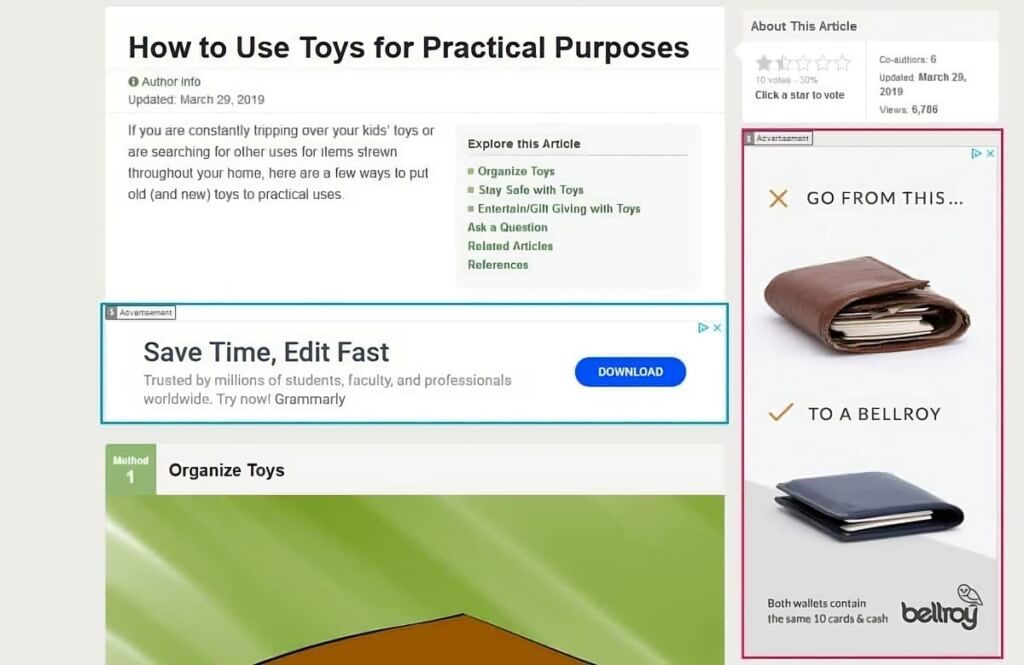
What is display advertising?
These advertisements come in all shapes and sizes.
You may view them as banners at the top of a website, in text form, or as smaller images on the side of a site.
Another example are ads that appear in the feed when you use Facebook, Instagram, or Twitter.
Advertisers typically use the Google Display Network to pay for these advertisements.
They appear on relevant third party websites and are expressly targeted to a specific niche and target audience.
The website owner gets paid whenever someone clicks (or views) on those ads.
How does it work?
The easiest way to profit from this method is to allow advertising on your blog. There is a reason why display ads are considered one of the “easy” ways to make money online, and many people look at buying blogs as an investement that allows them to make passive income.
You do this by joining an advertising network such as Google AdSense. AdSense is often the most popular choice for smaller websites because the requirements to join are achievable for most blog owners.
There are also AdSense alternatives like Ezoic, Raptive, Mediavine, Infolinks or Media.Net. The final choice will depend on what type of traffic is your site generating and your niche.
The application process is straightforward, although most networks want to see sites that have unique content and those regularly posting long form content (more opportunity to insert ads between paragraphs = more revenue.)
There are several ways these companies measure what they owe you, with two most common being a Cost per Click (CPC) (meaning they will pay you for each person who clicks an ad placed on your website) or the number of page views on your website.
All advertisers bid for placement of their ads.
If you have a large enough site you could consider selling ads and text links directly to interested advertisers.
Pros
- The income is passive
- Advertising as a form of digital marketing is still growing
- It’s free to join and use an advertising network
- It’s easy for a beginner
Cons
- Many people find ads intrusive and they can interrupt your customer’s experience
- Ads slow your page speed which in turn affects your site ranking
- Too many advertisements can ruin the appearance of your page
Best for you if
- You have a well defined niche with plenty of traffic coming to your website.
- Your site is large enough to interest advertisers who you can approach directly.
SOFTWARE AS A SERVICE – SAAS
SaaS is the abbreviated form of Software as a Service.
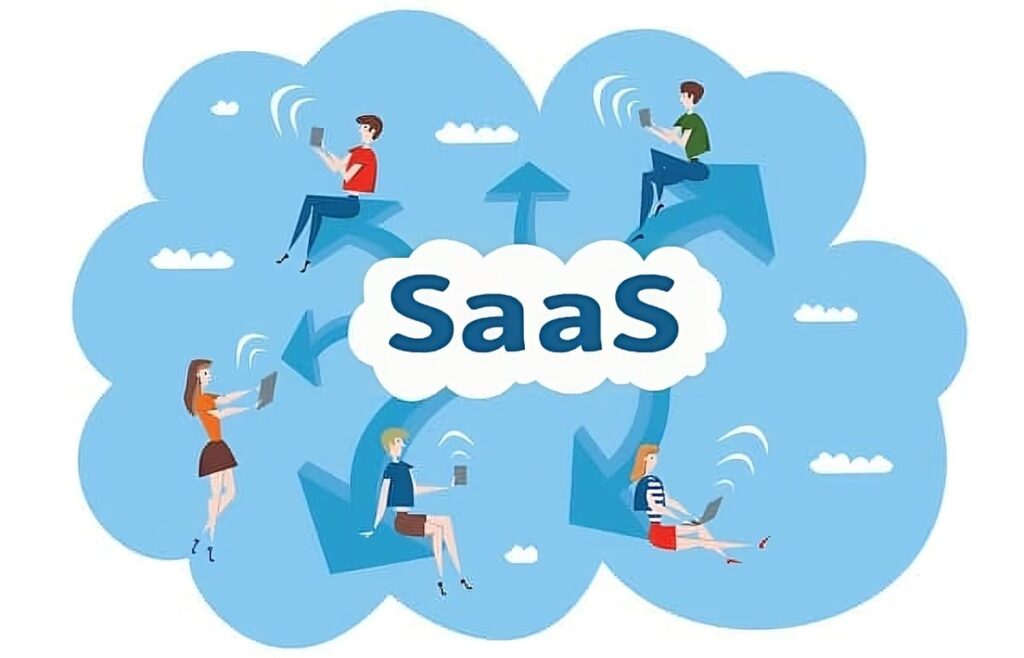
What is SaaS?
It’s yet another business model that wouldn’t exist without the internet.
As opposed to software that requires infrastructure and end-user licensing, SaaS is hosted in the cloud.
Individuals and businesses pay a monthly fee to the SaaS company which hosts their membership.
The customer has only to log into their account to get access to the software and it can be accessed from any device and web browser.
This industry is growing rapidly as new SaaS products are being developed on a regular basis.
There are literally thousands of companies providing a range of products from marketing software and accounting, to online stores and customer support.
The SaaS market is expected to reach 344 billion U.S. dollars in 2027; a 35% increase since 2023.
How does it work?
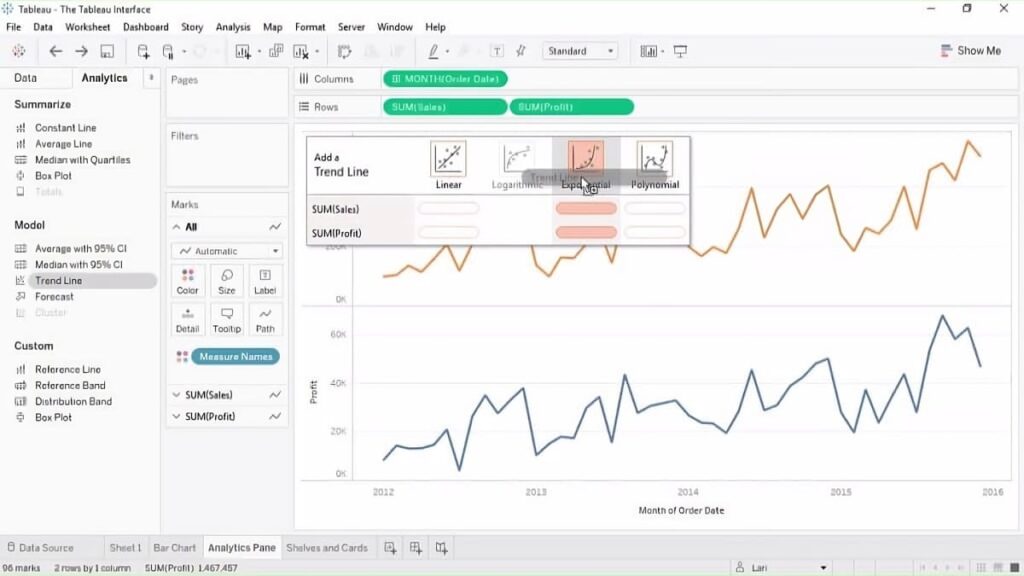
There are three ways to get into the SaaS business.
Over the past few years, many people have had a great idea for a SaaS product. A lot have even turned them into reality!
Given the popularity of SaaS products today, this is the number one option if you have an innovative software program to launch to the world.
The second is to partner with a SaaS company to resell their products.
You would probably be in a similar industry and have existing customers, e.g., a traditional software vendor.
The third option is to become an affiliate partner and direct leads to the vendor’s website.
The third option is arguably the most popular choice because you don’t need to provide training or support to a buyer.
If you already have a website or blog, you can begin by choosing products related to your niche, or those you already use.
Simply check their programs, sign up, and start promoting them.
Customers pay a monthly fee to use the software. The price varies from a few dollars to hundreds of dollars per month.
While the percentage of commission you receive will differ, you will receive a portion of that sale when a buyer uses your link to make a purchase.
Some SaaS companies offer a one-time payment and others give 20% or more on an ongoing basis, e.g., Shopify.
This income continues for as long as the customer uses the SaaS application.
Pros
- Most programs provide monthly recurring revenue
- It’s a growing market
- New products are innovative and unique
- Easy to market as most SaaS companies offer free trials for users
Cons
- You don’t set your own prices
- Many sellers are promoting the same software – think Bluehost
- Programs can change or disappear altogether
- You need to have – or find – a good chunk of change if you are going to design, develop, and get your Saas product to market.
Best for you if
- You know and use these products.
- You have the appropriate audience for the SaaS products you’re offering.
- You’re able to research and source new and unique products to promote.
BLOGGING
In its most basic form, blogging consists of having a website dedicated to creating content for your audience.

What is blogging?
A professional blogger will use a lot of different methods to monetize their site, while a hobby blogger will write and publish their content purely for enjoyment.
The most well recognised professional bloggers concentrate on a particular niche. This can be anything from hair care to hiking.
A blogger’s income will come from several sources such as selling display advertising, promoting another company’s products as an affiliate, or from their own digital products, e.g., guides and courses.
How does it work?
It’s easy to set up a blog.
Grab your domain, hosting, build your website and start writing.
Many blog owners write for years before considering earning an income from their blogs, but the ultimate aim of a professional blogger is to make money.
It’s important to start with topics that you know well or have experience in. This narrows down your niche market and means you won’t run out of things to talk about.
The next step is to identify ways to monetize your blog.
The trick here is to know exactly who your audience is and what their problems are.
When you know that, you can offer paid solutions to those problems.
Options for earning an income from your blog include display advertising (mentioned above), affiliate income, sponsorship and your own products.
It may seem obvious, but if you become an affiliate for another company, then it’s best if those products are in your niche.
It’s also better to offer products and services that you use yourself. If you believe these will truly help your readers, then that builds trust between you.
Of course, you can also sell products that you create yourself.
A book, or a video series are good examples of this approach.
The majority of bloggers online will use more than one of these techniques to generate income.
Blogging can be an excellent foundation for a profitable online business. If you treat it as a marketing medium and have a product for that market, then you have a business.
Pros
- It’s a low cost option to start
- You can build a reputation and authority in your market
- You’re able to monetize your blog through various methods
Cons
- Producing content is time-consuming and takes a lot of work
- Need to regularly publish and interact with your readers
- You need a solid strategy for promotion
- You won’t make money unless you sell something
- You really need to understand on-page SEO
Best for you if
- You love creating content.
- You are an expert in a particular niche.
- You have (or can grow) an engaged audience.
PODCASTING
Let’s start by explaining a podcast.

What is a podcast?
Podcasting refers to the creation and distribution of audio files through the internet.
Most podcasts are free for the consumer to download and listen to, although there are subscription models.
Podcasts normally have one or two regular hosts, similar to a radio show. Sometimes these presenters will interview guests who are experts in the topics or themes discussed.
Podcasts are usually focused on a particular subject which is divided into episodes and aired on a weekly basis.
They are a popular platform because the content is easy to consume whether listeners are commuting, out walking, or in their cars.
Podcast sponsorship refers to the ads that air before, during, or at the end of a show.
Often the host is given a set script to read. Alternately, the host will design a message from a list of talking points provided by the advertiser.
How does it work?
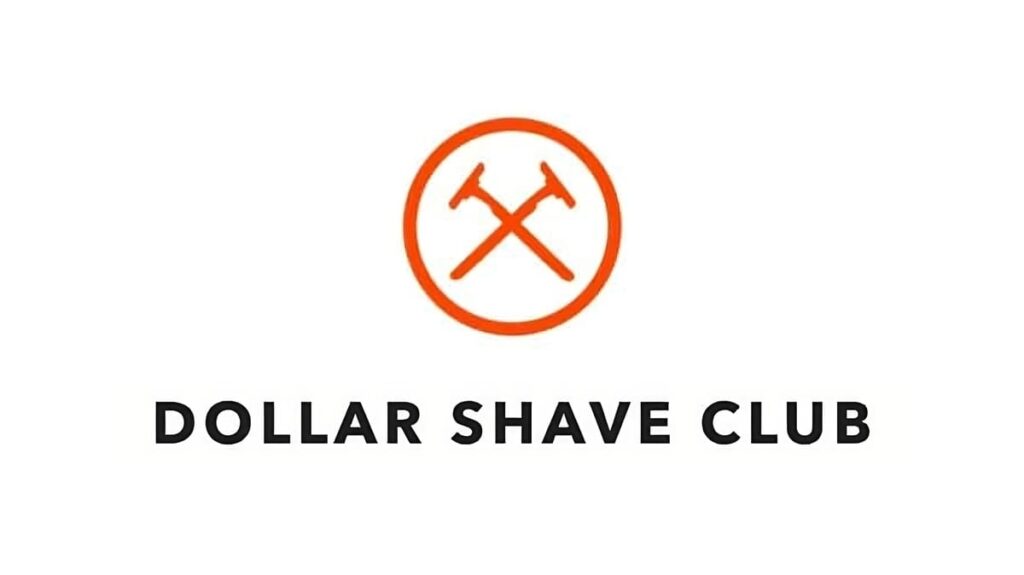
Once you’re producing a regular show and have a group of dedicated listeners, you can start researching potential sponsors.
Your sponsorship income may be derived from one of two main sources:
- Direct sponsorship from an advertiser
- Your earnings from “affiliate sponsorships”
The process for gaining sponsorship from an advertiser will involve these steps:
- Start by making a list of companies who have something in common with your niche
- Reach out to them explaining why your show is a good fit for their products
- Provide hard data on your audience, e.g., demographics, number of listeners, engagement rates
- Negotiate a deal
Sponsors will usually feature in 2 and sometimes 3 sections of a podcast.
These are a 15 second “Pre-Roll”, a 60 second “Mid-roll” and a “Post- Roll” ad of between 15-30 seconds.
Traditional sponsorships are sold on a Cost per Mille (CPM) basis, i.e., cost per thousand pageviews. The rates can vary but the prices below are indicative for each 1,000 downloads of your show.
- A 15-second Pre-Roll = $18 per 1000 (CPM)
- A 60-second Mid-Roll = $25 per 1000 (CPM)
- A 30-second Post-Roll = $10 per 1000 (CPM)
So, if you have 1,000 listeners, then your earnings from one sponsor will be $53.00.
If you produce 4 shows per month, then your income is $212.00.
This is a numbers game. The higher your downloads, the more you earn.
If you’ve reached 5,000 listeners, then you’re earning over $1,000 per month in additional income for no extra work.
You may be able to negotiate rates with a sponsor if your niche is worth more.
Even if your audience is small.
When you have a bunch of raving fans who often buy what you recommend, then the advertiser will know their product is well suited to your group.
A second choice for earning sponsorship income is when you promote products or services to your fan base.
Affiliate sponsorship works on a CPA model: Cost per Action.
This is a great way to get started because you don’t need a minimum number of listeners.
You simply refer your audience to a link for a product you recommend and receive an affiliate commission for the action they take.
Usually this is in the form of a unique link or a discount code mentioned on the podcast.
It works.
54% of podcast consumers say that they are more likely to consider the brands they hear advertised on podcasts.
In addition, as long as the links are active, you could continue earning for some time to come. This happens when new people listen to older episodes of your show and follow your links.
Pros
- Building strong sponsor relationships helps grow your audience
- Steady stream of income and good PR
- No need for a blog in order to start
- Potential to drive traffic back to your website
Cons
- Vendors may discontinue their affiliate programs
- You may alienate some listeners
- It takes time to find and maintain sponsors
- Most sponsors require a very large audience
- It’s not a business asset
Best for you if
- You have a group of engaged and loyal followers.
- You don’t want to overtly advertise your own products and services.
- There is consistent demand from advertisers in your niche.
COACHING AND CONSULTING
While these two market sectors are similar, they are not exactly the same.

What is coaching and consulting?
A coach or consultant is usually a specialist in their particular field who helps clients through a process or a problem.
There is one fundamental difference between coaching and consulting.
- A coach helps and guides clients towards finding solutions on their own.
- A consultant asks questions, analyzes a situation, and then provides their clients with the answers.
In short, one facilitates the answers and the other gives the answers.
In addition to training and strategy, coaches and consultants are variously employed to hold people accountable and keep them motivated towards their goals.
There are numerous business sectors offering opportunities for coaches and consultants, but the highest paying are in the business, finance, or fitness and health fields.
According to the International Coaching Federation, the personal coaching industry in the USA is now worth over 1 billion dollars annually and continues to grow.
How does it work?
Legally, there is no requirement for a coach or consultant to have any professional certification to offer their services.
To distinguish yourself from others in your industry, it is an advantage if you can show some proof of your training or experience in your profession.
To sell anyone your services requires a level of credibility that only a certificate or training program can provide.
Be aware that some of these courses require 12 – 36 months of commitment and have fees between $1,500 and $15,000.
Coaches and consultants typically start their business through a website or blog.
A common method used to sell coaching or consulting services is to package bundles of services including different tools and resources.
If you have an established level of trust with your audience and strong knowledge in a specific area, then you have the ability to create a substantial income.
The great thing about this industry is that there are numerous options for monetizing your website or blog.
If you are trading your time for money, then coaching clients one-to-one or even in group sessions quickly reaches a saturation point.
Most successful coaches and consultants scale their business by providing other services:
- Creating online courses
- PDF guides
- Special events
- Membership programs
- Display advertising
- Paid training in the form of webinars
- Writing and selling books
- Promoting products as an affiliate
As well as being a salable item, most coaches create digital products to use for marketing purposes. Since you only need to develop them once, the time-saving benefits are clear.
The trick to making more money in this business is to automate as many of the processes as possible.
Pros
- You can run this business from home online
- The earning potential is high
- You can start this business while doing your training
Cons
- Formal training and certifications can be costly
- Can be difficult to build up a client base in the beginning
- You will spend a lot of time on marketing
Best for you if
- You are an expert in a specific niche.
- You are able to network effectively offline and online.
- You provide premium content that clients will pay for.
- You can demonstrate transformation and clear outcomes for your clients.
E-COMMERCE
I’m sure you’re all familiar with the word e-commerce: electronic commerce.
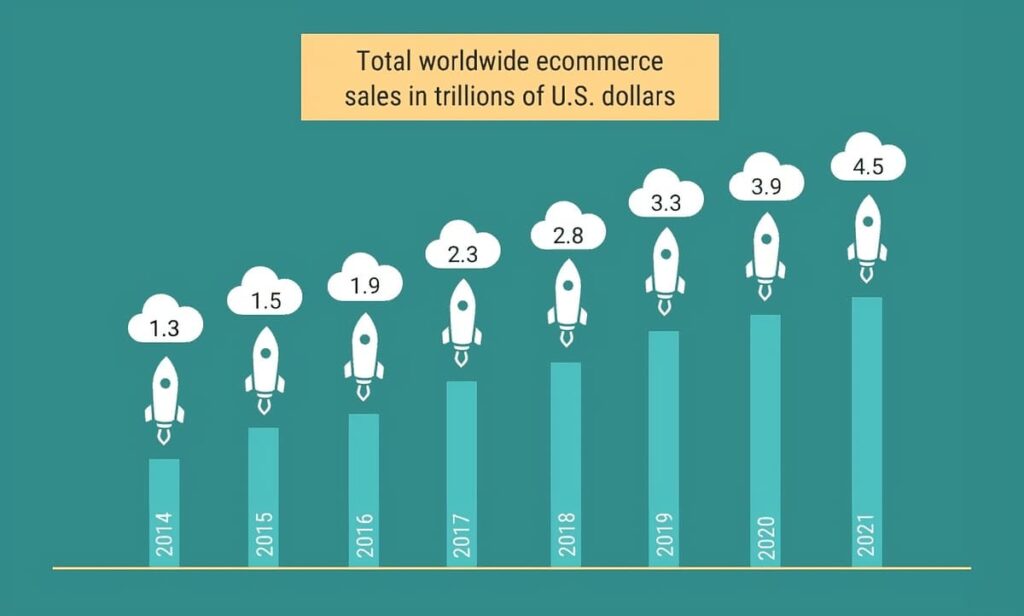
What is e-commerce?
In the simplest terms, e-commerce is any business activity that occurs online.
Just about any business can operate using an e-commerce platform. The only thing required is the technology to provide the service.
With e-commerce, people and businesses purchase goods electronically without having to worry about where they are located or when they choose to shop.
E-commerce is also a platform to sell goods and services.
When you think of e-commerce, remember that it’s not all about online shopping through your favorite store. The following are also e-commerce:
- Internet banking – or online banking
- Electronic payment – like PayPal
- Purchasing tickets for movies, concerts, or transport
- Online auctions
Buying an existing e-commerce website, one that’s already making money, like the verified e-commerce sites you can find on Investors Club, will get you a head start and you will be earning serious revenue from day one.
There are actually several different classifications for e-commerce.
Dropshipping
If you’re looking to break into eCommerce but don’t want to deal with the logistics, dropping shipping offers a more flexible option.
You market the products, and when an order comes in, the manufacturer or product owner deals with the inventory and shipping.
But as much of your business is outsourced, it’s harder to maintain quality throughout the supply chain, which could harm customer satisfaction.
In addition, since you’re adding in an intermediary, there’s the potential for smaller margins as you have to pay drop ship fees on top of existing product costs.
Investors Club has a number of dropshipping businesses available for sale – take a look what they do and how they work.
Private-Label/Own Branded Store
Setting up your own store is more capital intensive and requires sourcing inventory with your branding. However, it often means you can buy in bulk leading to more significant discounts and higher profit margins.
Operating your own store with your own branded products gives you greater control over the supply chain and fulfillment process, which has its benefits.
Subscription Boxes

A trending area in the e-commerce space, subscription boxes are an attractive business model due to the recurring nature of their revenue.
Typically they offer one of three primary services:
- A replacement for a frequently used item – e.g., Dollar Shave Club delivering replacement razor blades and other personal grooming products monthly.
- A curated selection of products around a theme – e.g., Barkbox’s monthly supply of dog toys, treats, and goodies or Birchbox and FabFitFun boxes filled with surprise beauty and lifestyle products based around established characteristics, e.g., skin tone, hair type, etc.
- Meal kit services – eg. HelloFresh and Blue Apron who provide the recipes and ingredients needed to make a set amount of meals.
How does it work?
If you have a product or service to offer online, then the process to set up your online store is not very difficult.
Having said that it does require time, preparation, and plenty of marketing “know how” to be successful.
The basic steps for setting up are:
- A brand or business name
- A unique selling proposition
- A website
- Products – your own, or products you source to sell
- A payment method
- A delivery method
- Traffic to your store
You can sell physical goods like footwear and electronics, or digital products such as ebooks and software.
The major difference is that sellers of physical products must have a delivery system in place to transfer products to their buyers. You can’t send a toaster over the internet!
Most new e-commerce business owners choose hosted e-commerce software to start their store.
It’s convenient and cost-effective because it combines everything you need to run your online store.
This software usually includes your web hosting, shopping cart, security, and some type of support.
Commonly used platforms are BigCommerce and Shopify.
While setting up is relatively easy, it’s not so easy to make a profit.
Your store is one of many, so it’s more difficult to get noticed in the crowd.
Many people use paid traffic as their primary method to get visitors and buyers to their stores.
Pros
- Lower cost – in general terms, e-commerce has a lower cost than a traditional brick and mortar store. The expense of renting, fitting out and maintaining a physical street presence are eliminated. There is often no need to hire as many full time staff and plenty of tasks can be outsourced online.
- No geographical limits – unless you choose to restrict your sales to certain countries or regions, your buyers can access your site and purchase from (almost) anywhere in the world. This means your pool of potential customers is millions of people worldwide.
- Always open – visitors to your site can view and purchase your products 24/7
- Provides access to customer data – e-commerce makes it easier to collect names, email addresses, physical addresses and phone numbers from your customers. This data allows you to communicate with your buyers regularly and develop a relationship with them over time. This data becomes an integral part of your marketing strategies.
- Scale up or down quickly – in most cases, e-commerce doesn’t require shelf space. This means vendors are able to respond quickly to changes in consumer demand or market trends.
Cons
- Finding the right niche – most people are drawn to highly competitive niches because they’re often seen as the best. The drawback is that your advertising will be expensive so you’ll require a large budget. One solution is to target a different audience than your competitors’ and grow your audience organically through your e-commerce blog and SEO.
- Highly competitive – with the continued rise of e-commerce, the online marketplace is extremely crowded. Sellers need to learn more about strategies to increase visibility online.
- Site crashes – even a few minutes of downtime (or technical issues) can put a big dent in your revenue and lead to customer dissatisfaction. Choose a robust platform and host for your e-commerce operations.
- Complex regulations and compliance – when selling to customers in different states or countries, you need to adhere to the applicable regulations. This applies not only in your location, but also in the customer’s location. This may cause complications with accounting and taxation.In addition, the regulations in the E.U. (GDPR – General Data Protection Regulation) affect how you handle and what you do with personal information from residents of the E.U. The ongoing sales tax debate in the USA is also an issue to watch.
- Slow growth without a marketing budget – you need a decent budget in order to get your e-commerce site producing revenue quickly. While organic methods (great content and SEO) work in the longer term, to produce quicker results you’ll need to invest in a PPC marketing campaign.
Best for you if
- You have a successful retail operation and want to expand your market.
- You have sufficient funds to cover your ongoing monthly hosting, inventory, shipping and marketing costs.
- You’re prepared to do a lot of research before starting out.
- You have a product (or products) that will sell in high volumes for less profit.
- Your product is unique and can be sold at a premium price.
PRODUCTIZED SERVICES
Productized services are relatively new in the online world and have provided opportunities for many freelancers (and others) who have graduated to life as an entrepreneur.

What is a productized service?
A productized service is a way to take what would normally be a one-to-one service offered to a client and bundling it into a standardized package.
These are done-for-you services that are created according to a set system or process.
Our done-for-you and turnkey websites are a prime example of a productized service.
They also have a defined scope and price.
Productizing allows most services to be clearly understood before anyone commits to start a job. When a client agrees to go ahead, they know exactly what they will receive for their purchase.
How does it work?
Anyone in a service based business (such as web design or consulting) is limited by their time and skills when it comes to taking on additional clients.
The answer is to limit the time and effort it takes to offer your services by packaging them and selling them as a complete solution.
Productizing a service means having a step by step process for an automated delivery of that service.
You are selling a result, so a productized service works best when you focus on delivering a specific service really well.
Your client is assured that they receive ongoing value for their monthly fee.
This means having systems.
Most people aren’t interested in systems or procedures, but these are the key to success in this business.
It usually involves streamlining procedures, hiring the appropriate team members, and using several 3rd party tools.
Productized services solve a problem for businesses who want a simple and effective answer to common business needs.
An example of this is Design Pickle.
This company solves the problem of searching for a graphic designer every time you need display ads, e-commerce graphics, presentations, and more.
Their model is based on a monthly subscription.
Clients choose from a standard or pro package and get a dedicated designer and unlimited work requests. For companies with high design needs this is a good example of a productized service.
Pros
- You can run this business from home online
- The earning potential is high
- You can start this business while doing your training
Cons
- Formal training and certifications can be costly
- Can be difficult to build up a client base in the beginning
- You will spend a lot of time on marketing
Best for you if
- You have a skill that can be packaged, e.g., design, social media or other marketing, video editing, website maintenance etc.
- You are process orientated.
- You’re prepared to make the time and commitment to design a product that is profitable and gives value.
AFFILIATE MARKETING
Affiliate marketing has been around for approximately 20 years and it’s still one of the most popular online business models today.
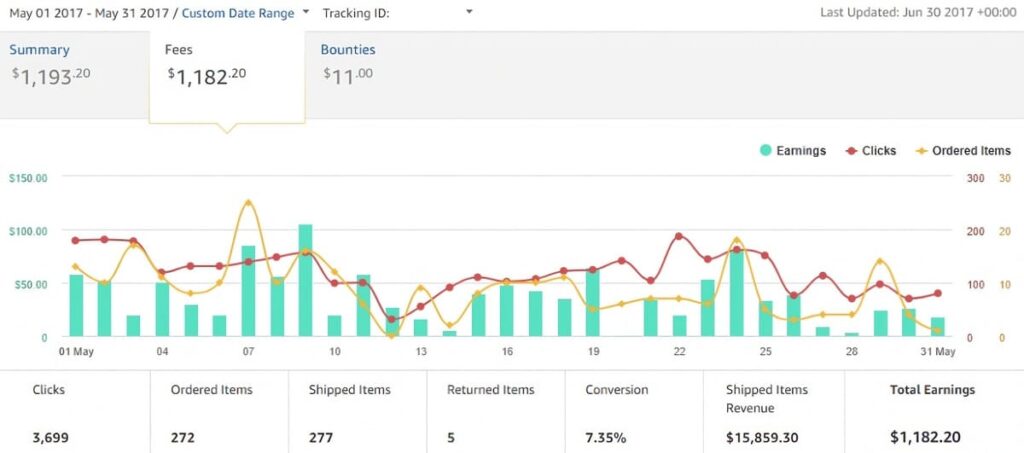
What is affiliate marketing?
If you’ve already heard about affiliate marketing you know that people have made large amounts of money from this online business.
In simple terms, affiliate marketing is promoting another company’s products in return for a commission on every sale you make.
There are several parties involved in this process:
The Merchant
also known as the vendor, seller, retailer, or brand.
This is the company that creates the products you promote. These products can be supplied by a brand or an individual entrepreneur.
The Affiliate
also known as the affiliate marketer or publisher.
Affiliates may be individuals – like you – or companies. An affiliate marketer is the entity that promotes one or more products through a website, blog, or social media account.
The affiliate’s job is to refer customers to a merchant’s product in a way that convinces them to buy it.
The Consumer
this is the end user, or purchaser.
They are the drivers of affiliate marketing. When someone purchases a product promoted by an affiliate, the affiliate and the merchant share in the profits.
Sometimes the consumer is not aware of this process, but they pay no more for their purchase.
There is a fourth part of the equation.
The Affiliate Network.
An affiliate network is a third party that acts as the middleman between the merchant and the affiliate.
These networks connect a merchant with an affiliate and offer large databases of products. They also manage the products and payments as well as tracking sales and traffic.
Some popular examples of affiliate networks are Amazon Associates, ShareASale, and Clickbank.
These businesses are only a small sample of the numerous affiliate networks out there.
You may be interested to note that some merchants only manage their programs on a certain network.
How does it work?
There are many online businesses that use affiliate marketing to generate revenue.
You will often see affiliate marketers in these types of businesses:
- Blogs
- Review sites
- Niche and authority sites
- SaaS
The basic outline to start as an affiliate marketer is as follows:
- Decide how you are going to promote your chosen offers, e.g., via a website, your blog, or social media.
- Research and find products that fit your niche and specific audience.
- Sign up with your preferred affiliate networks or direct affiliate programs.
- Create promotional content and use the affiliate links provided.
- Market your content on the channels that best suit your business.
- Start generating affiliate clicks and earning commissions.
- Do this over and over again.
In order to get paid, merchants will give you a unique user ID that enables them to track the sales you make from your marketing efforts.
The buttons, ads, or links you use on your website or blog direct customers to the merchant’s site.
When the user chooses to buy the product you offered, the merchant will be alerted that you were the affiliate responsible for this action.
The end result is that you will be paid for that purchase.
Commissions vary widely and you should do your research before signing up for any program.
Amazon affiliates earn anywhere from 1 – 10% per sale and other programs typically offer between 5 – 20%.

There is opportunity to earn 20% or more from some vendors and look out for those offering recurring payments on their products. These payments are offered when customers are charged on a monthly basis.
It’s not only the typical consumer purchases that make money for you.
You may also be paid per lead or per click.
In either case, a visitor to a merchant’s website is not necessarily required to make a purchase for you to receive a payment (but 90% of the time – you’ll only be credited for the sale).
For leads, a site visitor may be required to fill out a contact form, or download a file.
With pay per click, you will be compensated for simply directing a visitor to a merchant’s website. In other words, you are paid for the increase in traffic to that site.
All of the above represents a simplified explanation of what’s involved with building a steady affiliate marketing income.
The real key to success in affiliate marketing is to choose your niche carefully, to produce great content that people care about, and to promote excellent products that are of value to your customer base.
Pros
- Passive Income – while we don’t entirely subscribe to this theory, your marketing skills do have the potential to earn you a steady flow of income. When you’re on vacation or not in front of your computer, any sales are taken care of for you.
- Works with any type of site – it doesn’t matter what your business is or the type of site you have. Affiliate marketing is always an option – even without a website. You may choose to promote offers solely through social media. It’s up to you.
- No customer support – the merchant is responsible for dealing with any customer complaints or questions after the sale. Whatever the situation, you still receive your payment.
- Work from anywhere – you don’t need an office so you’re able to do your job from almost anywhere in the world.
- Cost effective – your fees to start up are lower than many other businesses because there’s no need to purchase the products you sell. This model lets you get your online business started faster.
Cons
- No control or ownership – affiliate vendors can change their commissions at any time and for any reason. A significant drawback is that they can – and do – shut down their programs. In addition, you don’t own the product. You have no say in its presentation or development.
- No customer data – when marketing someone else’s products, the purchasers are sent directly to the vendor’s site. Unless they are already on your email list, then you miss out on collecting their data. Since your payment may only be for the initial sale, you receive no additional value from that customer.
- Recurring affiliate programs – can provide a steady stream of revenue, but the commission might be lower than an alternative with a high one-time payment.
Best for you if:
- You create content that is informative and builds trust. Your readers will be more inclined to follow your product recommendations.
- You can tailor your offers to a specific niche because this increases conversions.
- You can cooperate effectively with influencers and other bloggers to expand your reach.
- You stay current with trends to ensure you remain competitive.
- You understand how to test the market and improve your conversion rates.
To wrap it all up…

There’s no doubt that the world of online business has something to offer everyone.
Getting started isn’t easy and selling online is no walk in the park. It takes time, dedication, plus a certain amount of skill.
To be successful online you need to do two things very well:
- Choose the right niche and business model for your market
- Find traffic sources to attract potential customers
It’s now up to you to choose which online business is right for you. There is no right or wrong way to do this and, indeed, you could incorporate several of the options above into your business.
Side-note: We recently published an in-depth guide that teaches you how to buy a profitable website. Reading and applying everything we teach in that article should be your #1 priority if you’re looking to acquire an established online business.
You just need to have a great plan and stay focused.
At Alpha Investors, our expertise is building, buying, and selling websites that generate traffic and sales.
If we had to pick one method to make money online, then the versatility of affiliate marketing would be our top choice.
We’ve built hundreds of profitable websites and have the systems in place to help you succeed.

Content Marketing Specialist
Hannah is a content marketing specialist at Investors Club and a freelance copywriter. When she’s not busy behind the keyboard, you’ll find her baking her signature salted caramel brownies or trying to sink that elusive hole-in-one.
Connect with Hannah:
Linkedin

